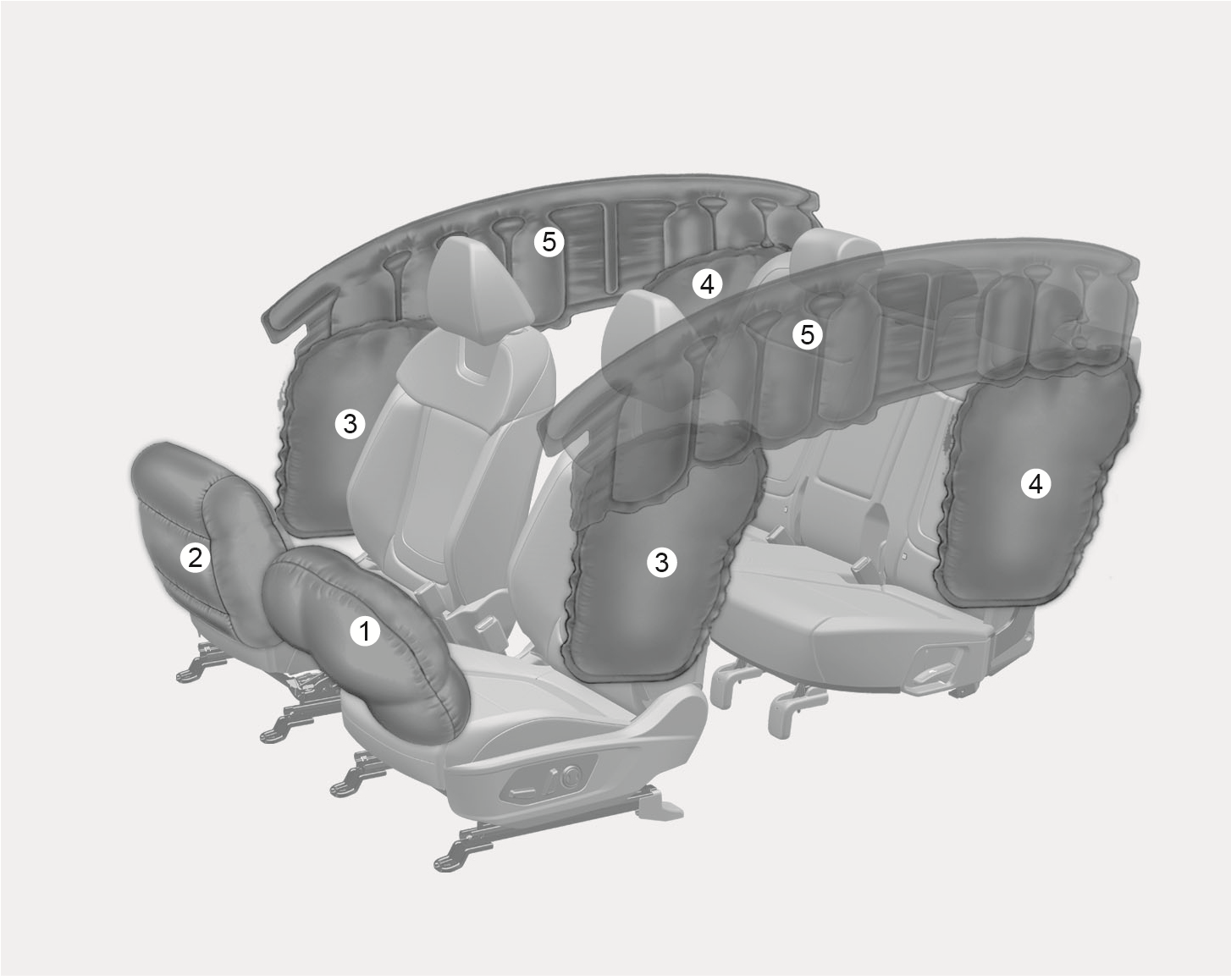Supplemental restraint system - airbags

1C_AirbagOverview
The actual airbags in the vehicle may differ from the illustration.
- Driver's front airbag
- Passenger's front airbag
- Front side airbag
- Rear side airbag
- Curtain airbag
Your vehicle is equipped with a Supplemental Airbag System for the driver's seat and front passenger's seats.
The front airbags are designed to supplement the three-point seat belts. For these airbags to provide protection, seat belts must be properly worn at all times when driving.
You can be severely injured or killed in a crash if you are not wearing a seat belt. Airbags are built into the vehicle as a supplementary system. They are not intended as a replacement for wearing 3-point seat belts. Also, airbags are not designed to deploy in every collision. In some crashes, the seat belts are the only restraint protecting you.
AIRBAG SAFETY PRECAUTIONS
-
Always use seat belts and Child Restraint Systems - every trip, every time, everyone! Even with airbags, you can be seriously injured or killed in a collision if you are improperly belted or not wearing your seat belt when the airbag inflates.
-
Never place a child in any Child Restraint System or booster seat in the front passenger seat, unless the airbag is deactivated.
An inflating airbag could forcefully strike the infant or child causing serious or fatal injuries.
-
ABC - Always Buckle Children under age 13 in the back seat. It is the safest place for children of any age to ride. If a child age 13 or older must be seated in the front seat, he or she must be properly belted and the seat should be moved as far back as possible.
-
Make sure that all occupants sit upright with the seatback in an upright position, centered on the seat cushion with their seat belt on, legs comfortably extended, and their feet on the floor until the vehicle is parked and the vehicle is turned off. If an occupant is out of position during a crash, the rapidly deploying airbag may forcefully contact the occupant causing serious or fatal injuries.
-
Never sit or lean unnecessarily close to the airbags or lean against the door or center console.
Move your seat as far back as possible from front airbags, while still maintaining control of the vehicle. The U.S. National Highway Traffic Safety Administration (NHTSA) recommends that drivers allow at least 10 in. (25 cm) between the center of the steering wheel and the chest.